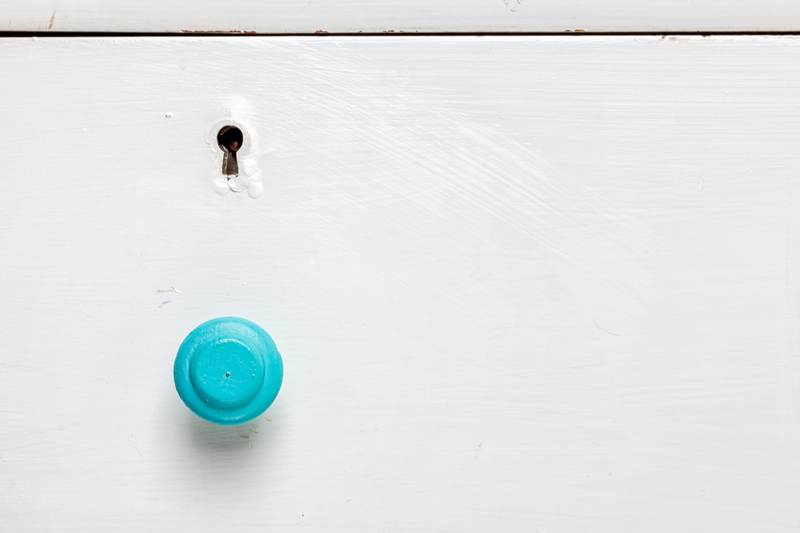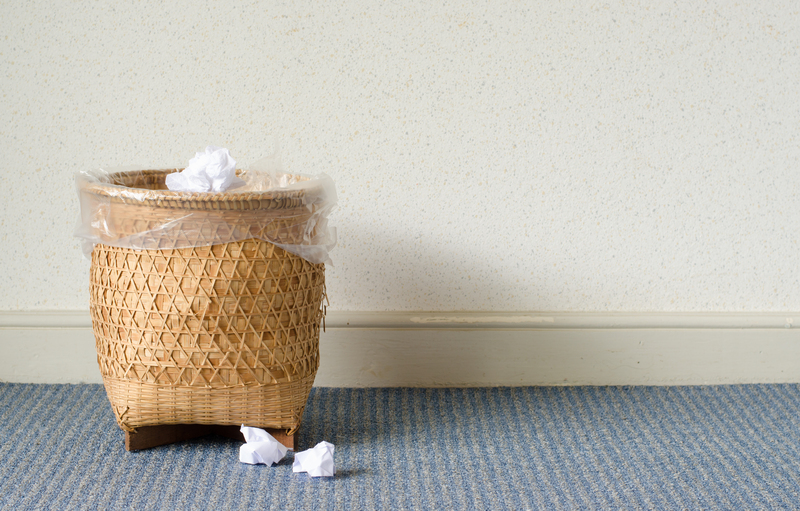How to Responsibly Get Rid of Unwanted Cookware
Unwanted cookware is a common sight in many households. Baking pans with missing non-stick coatings, dented pots, mismatched lids, or even sets you simply never use anymore seem to accumulate over time. But throwing them in the trash isn't always the most responsible or eco-friendly way to dispose of old cookware. In this comprehensive guide, you'll discover how to properly and responsibly get rid of unwanted cookware so you can declutter your kitchen while making a positive impact on your community and the environment.

Understanding the Environmental Impact of Cookware Disposal
Each year, households generate tons of metal, plastic, ceramic, and glass waste--much of it from old kitchen tools and pots and pans. Most types of cookware are not biodegradable, and when sent to landfill, they can take hundreds of years to break down. Worse, materials like non-stick coatings may leach chemicals into the environment. Responsible disposal and reuse are much more sustainable strategies to reduce your impact.
- Metal cookware: Usually made of aluminum, stainless steel, copper, or cast iron--these can often be recycled but not in your regular bin.
- Non-stick pans: Contain chemical coatings that require special handling.
- Ceramic, glass, and enamelware: Typically can't be recycled curbside and may need special attention or upcycling.
Steps to Responsibly Dispose of Old Cookware
1. Assess the Condition of Your Cookware
Before deciding on disposal, take a close look at the cookware. Is it:
- Still in usable condition?
- Broken, chipped, or unsafe for use?
- Missing parts but otherwise salvageable?
*If your unwanted pots, pans, or kitchenware are still usable, consider giving them a second life instead of simply throwing them out.* For items that are truly beyond use, recycling or proper disposal methods are the next step.
2. Reuse and Repurpose: Give Your Cookware a New Home
The most responsible way to get rid of cookware that's still functional is to keep it in use. Repurposing cookware or passing it on for reuse helps minimize waste and supports sustainability.
- Donate to Local Charities: Many thrift stores, shelters, and community kitchens gladly accept cookware in good condition. Organizations like Goodwill, The Salvation Army, or your neighborhood food bank often need these items.
- Share with Friends, Family, or Online Communities: Use local Facebook groups, Nextdoor, Freecycle, or Buy Nothing groups to find someone who needs your unwanted kitchenware.
- Upcycle for Creative Uses: Turn old pots into plant holders, use skillets as wall decor, or transform pans into serving trays or storage bins. Upcycling gives your cookware a second purpose while adding character to your home.
*Remember*: Items with non-stick coatings that are extensively scratched, pans with loose handles, or cracked ceramics may not be safe for cooking but could still be useful in non-food applications.
3. Recycling Old Cookware Responsibly
Can you recycle old pots and pans? The answer depends on their material and your local recycling options. Most metal cookware is recyclable, but not always through standard curbside recycling.
- Aluminum and Stainless Steel: Remove any non-metal parts (like plastic handles or glass lids), then take the cookware to a scrap metal facility or recycling center. Aluminum and steel are among the most recycled metals and have a high value.
- Copper Cookware: Very sought after by scrap metal recyclers. Make sure pots and pans are clean and free from food residue.
- Cast Iron: Heavy and durable, cast iron cookware can be recycled as scrap metal or donated for restoration.
- Non-Stick and Teflon-Coated Pans: These require specialized facilities. The coatings are not usually recyclable with metals, so contact your municipality or the manufacturer for take-back programs.
- Ceramic, Enamel, and Glass: Most municipal recyclers do not accept these materials in the curbside bin. Specialized construction waste facilities or creative reuse are better options.
Tip: Always call your local recycling center before dropping off cookware to confirm they accept your items.
4. Manufacturer Take-Back and Mail-In Programs
Some manufacturers and brands have recognized the need for responsible cookware disposal, launching take-back or recycling programs for old pots and pans.
- Calphalon: Offers a mail-in program ('Calphalon ReNew') for recycling old non-stick pans regardless of brand.
- GreenPan: Some eco-friendly companies partner with TerraCycle or local recycling centers for safe disposal.
- T-fal, All-Clad, and More: Check the brand's website or customer service for disposal or recycling options.
Mail-in programs are particularly helpful for non-stick cookware disposal as they ensure the chemical coatings are handled safely and do not end up contaminating landfills.
5. Responsible Disposal When All Else Fails
If your cookware cannot be donated, repurposed, or recycled, and there are no mail-back options, you may need to prepare it for landfill disposal--but always follow local guidelines.
- Remove any dangerous parts, such as shattered lids or exposed sharp edges.
- If possible, separate different materials (metal, plastic, rubber).
- Check if your local waste authority has a bulk trash day or hazardous materials drop-off for hard-to-dispose-of items.
*Responsible disposal* ensures that, even in last-resort situations, you are minimizing harm.
Clever Ideas for Upcycling Old Cookware
Not everything needs to go out your door! With a little creativity, your old pots and pans can enrich your home or garden. Here are some clever and sustainable upcycling ideas:
- Planters: Drill a small hole for drainage and use an old pot or pan as a quirky planter.
- Bird Feeders/Water Bowls: Sturdy stainless or cast iron makes a perfect outdoor feeder or birdbath.
- Organizers: Store small items in the garage, craft room, or shed.
- Home Decor: Paint and mount cookware for unique wall art or clocks.
- Serving Trays: Handles on old frying pans make them nifty rustic trays for parties or picnics.
Upcycling is a wonderful way to keep unwanted cookware out of landfills while creating something new and fun.
Frequently Asked Questions on Old Cookware Disposal
Can you recycle Teflon or non-stick pans?
Standard curbside recycling programs do not accept Teflon or non-stick coatings. Specialized facilities or take-back programs are required. Always consult your local recycling guidelines or the product manufacturer first.
Is it safe to donate cookware with scratches or chips?
If the cookware is otherwise functional and safe (no chipped Teflon or sharp broken parts), donation is suitable. However, avoid donating items with flaking non-stick coatings or structural damage.
What about glass lids and plastic handles?
Most recycling centers require you to remove non-metal parts from pans before recycling. Some glass lids may be accepted with mixed glass recycling at special centers--call ahead for confirmation.
Can old cookware be thrown in the trash?
In most cases, yes, but this should be your last resort. Metal pots and pans don't decompose and can clutter landfills for centuries. Always try to recycle or repurpose first.

Tips for Reducing Future Cookware Waste
Disposing of unwanted cookware is only part of the solution. Reducing future waste makes an even greater difference:
- Invest in Quality: Buy durable cookware that lasts for years and avoid low-cost, low-quality options.
- Care for Your Cookware: Follow cleaning and maintenance instructions to extend the lifespan of your pans and pots.
- Choose Eco-Friendly Brands: Support companies offering recycling programs or manufacturing with sustainable materials.
- Limit Quantity: Keep only what you regularly use and resist impulse kitchen purchases.
Mindful consumption and proper care reduce the frequency with which you'll need to dispose of cookware in the future.
Conclusion: Making a Difference With Responsible Cookware Disposal
Getting rid of unwanted cookware responsibly is about more than just decluttering your kitchen--it's a simple step toward a healthier planet. By evaluating the condition of your cookware, prioritizing reuse, choosing eco-friendly recycling methods, and embracing creative upcycling, you ensure your old pots, pans, and bakeware don't end up as needless landfill waste.
*Remember*: Every small effort--whether it's donating a gently used skillet, turning an old pot into a planter, or dropping off pans at a metal recycling facility--counts toward a more sustainable home and planet.
So the next time you find yourself sorting through kitchen cabinets and drawers, you'll know exactly how to responsibly dispose of unwanted cookware. With the right information and a commitment to sustainability, you can make a meaningful difference, one pot and pan at a time.
- Donate or share your usable cookware.
- Seek out local recycling options and facilities.
- Try creative upcycling ideas for broken or outdated pieces.
- Check with the manufacturer for recycling programs.
- Dispose of unusable items properly only as a last resort.
Your kitchen--and the earth--will thank you!
